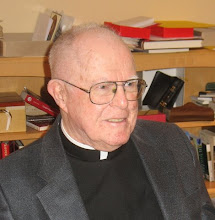BENEDICT XVI VISITS THE AUSTRIAN FAITHFUL
Early this month, Benedict XVI made a three-day visit to Austria, historically the most heavily Catholic country in Europe. Cardinal Franz Koenig of Vienna had been a major figure in Vatican Council II. Throughout the 1970s he had been noted for his moderation, his willingness to listen to his people, and his involvement in dialogue with others. Other bishops participated in assemblies of the faithful, who thus had their voices heard. On becoming Pope in 1979, John Paul II instituted a campaign to rein in the progressive elements, chiefly by appointing conservative bishops, many of whom proved pastorally incompetent. Hans Groer, an extremely unpopular figure with Austrian Catholics, was appointed archbishop of Vienna in 1986. Subsequently, allegations surfaced that in his past he had sexually molested young men. In 1995 he was forced to resign. This incident brought to a climax the disaffection of many of the faithful. In 1996, the reform organization “We Are Church” was formed to carry out measures put in place by Vatican II. Insisting on their Catholicity, thousands enrolled. Their agenda included items quite out of harmony with the Vatican: optional celibacy for priests, careful re-examination of birth control bans and homosexuality, ordination of women, and new methods for selection of bishops. In 1998, the then Cardinal Ratzinger condemned “We Are Church”, alleging its lack of accord with Catholic doctrine. Further incidents indicated continuing problems in church governance with increasing disaffection amid the faithful. In 2004, Bishop Kurt Krenn was removed from his diocese due to personal and scandalous homosexual and pornographic problems in his seminary. Again, the laity expressed concern and a desire to be heard.
Into this context, Benedict XVI made his visitation to Austria. He met with government officials, with Austrian bishops and priests, with the Chief Rabbi of Vienna and other Jewish figures. But when “We Are Church” leaders requested that he meet with them, he refused. They were professed Catholics, desirous of voicing their criticisms of the elements of corruption and mismanagement experienced in their Church. They have some ideas to discuss about increasing priestly vocations, participation in administration, and vetting candidates for the episcopacy and their subsequent oversight to avoid further damaging mistakes. How is one to understand this refusal of the pope to meet with this largest Catholic association of the faithful in Austria when he meets cordially with outsiders? Could it be that Benedict considers the claim to be Catholic broader than it is? Does he feel that to be a real Catholic, one must accept the policies, practices, and interpretations of the Holy Father, even those outside the narrow focus of faith and morals? To be considered a Catholic must one’s mind become a Xerox copy of the papal mind?
For the Austrian faithful, the icon for a real Catholic is not that of an ancient monk scrivener carefully copying down words from an old manuscript. A more apt icon would be a Galileo figure, his telescope searching the galaxies!
Into this context, Benedict XVI made his visitation to Austria. He met with government officials, with Austrian bishops and priests, with the Chief Rabbi of Vienna and other Jewish figures. But when “We Are Church” leaders requested that he meet with them, he refused. They were professed Catholics, desirous of voicing their criticisms of the elements of corruption and mismanagement experienced in their Church. They have some ideas to discuss about increasing priestly vocations, participation in administration, and vetting candidates for the episcopacy and their subsequent oversight to avoid further damaging mistakes. How is one to understand this refusal of the pope to meet with this largest Catholic association of the faithful in Austria when he meets cordially with outsiders? Could it be that Benedict considers the claim to be Catholic broader than it is? Does he feel that to be a real Catholic, one must accept the policies, practices, and interpretations of the Holy Father, even those outside the narrow focus of faith and morals? To be considered a Catholic must one’s mind become a Xerox copy of the papal mind?
For the Austrian faithful, the icon for a real Catholic is not that of an ancient monk scrivener carefully copying down words from an old manuscript. A more apt icon would be a Galileo figure, his telescope searching the galaxies!


0 Comments:
Post a Comment
Subscribe to Post Comments [Atom]
<< Home